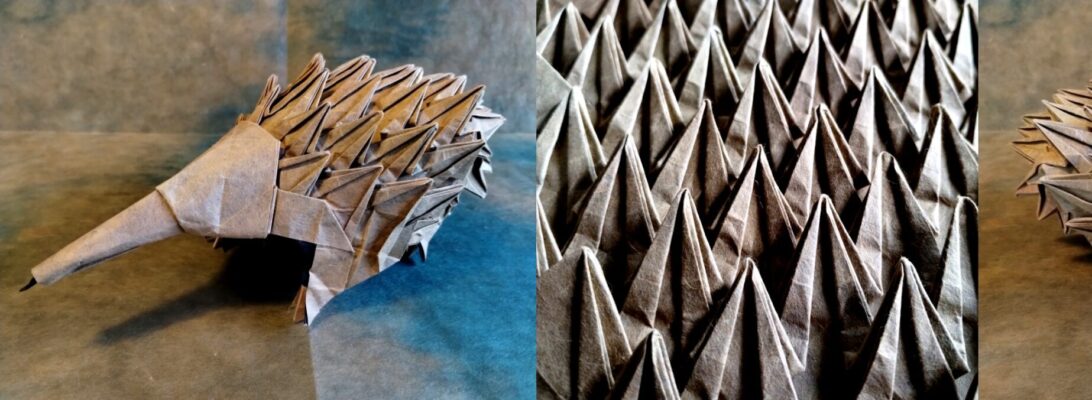All cities have them, that anonymous dissociated youth that lurk on the periphery, just outside the light pool, wearing a hoodie (hooded fleece/jacket) plunging their face into deep shadow.
I really like this model (having been a bit nervy to try it), and am so completely chuffed that, first time fold, it turned out so nice – down to the elbows and shoulders … and it is free standing also – wow. ONE square of paper, no cuts or glue, very neat indeed:
 The construction principle is actually pretty simple: fan-fold to 16ths horizontally and vertically, crease the corner to corner creases both ways and it just collapses into this wonderful base from which you can tease arms, legs, body, neck and head; crimp elbows and knees, rabbit-ear feet and hands and presto, done.
The construction principle is actually pretty simple: fan-fold to 16ths horizontally and vertically, crease the corner to corner creases both ways and it just collapses into this wonderful base from which you can tease arms, legs, body, neck and head; crimp elbows and knees, rabbit-ear feet and hands and presto, done.
Have a go – not so much a challenge as it looks, so long as you are neat and accurate in your pre-folding.






















